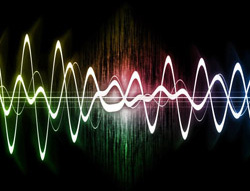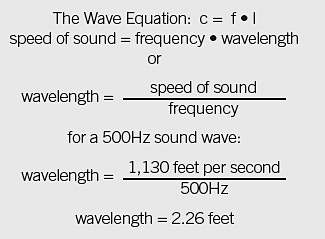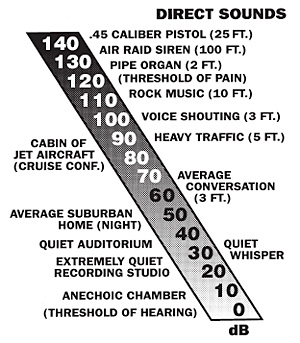Sound Waves
Sound moves through the air like waves in water. Sound waves consist of pressure variations traveling through the air.
When the sound wave travels, it compresses air molecules together at one point. This is called the high pressure zone or positive component (+).
After the compression, an expansion of molecules occurs. This is the low pressure zone or negative component (-).
This process continues along the path of the sound wave until its energy becomes too weak to hear. The sound wave of a pure tone traveling through air would appear as a smooth, regular variation of pressure that could be drawn as a sine wave.
Frequency, Wavelength & Speed of Sound
The frequency of a sound wave indicates the rate of pressure variations or cycles. One cycle is a change from high pressure to low pressure and back to high pressure.
The number of cycles per second is called Hertz, abbreviated “Hz.” So, a 1,000 Hz tone has 1,000 cycles per second.
The wavelength of a sound is the physical distance from the start of one cycle to the start of the next cycle. Wavelength is related to frequency by the speed of sound. The speed of sound in air is about 1130 feet per second or 344 meters/second. The speed of sound is constant no matter what the frequency.
The wavelength of a sound wave of any frequency can be determined by these relationships:
Loudness
The fluctuation of air pressure created by sound is a change above and below normal atmospheric pressure. This is what the human ear responds to. The varying amount of pressure of the air molecules compressing and expanding is related to the apparent loudness at the human ear. The greater the pressure change, the louder the sound.
Under ideal conditions the human ear can sense a pressure change as small as 0.0002 microbars (1 microbar = 1/1,000,000 atmospheric pressure). The threshold of pain is about 200 microbars, one million times greater!
Obviously the human ear responds to a wide range of amplitude of sound. This amplitude range is more commonly measured in decibels Sound Pressure Level (dB SPL), relative to 0.0002 microbars (0 dB SPL).
0 dB SPL is the threshold of hearing Lp and 120 dB SPL is the threshold of pain. 1 dB is about the smallest change in SPL that can be heard. A 3 dB change is generally noticeable while a 6dB change is very noticeable. A 10 dB SPL increase is perceived to be twice as loud!
Sound Propagation
There are four basic ways in which sound can be altered by its environment as it travels or propagates: reflection, absorption, diffraction and refraction.
1. Reflection – A sound wave can be reflected by a surface or other object if the object is physically as large or larger than the wavelength of the sound. Because low frequency sounds have long wavelengths they can only be reflected by large objects.
Higher frequencies can be reflected by smaller objects and surfaces as well as large. The reflected sound will have a different frequency characteristic than the direct sound if all frequencies are not reflected equally. Reflection is also the source of echo, reverb, and standing waves:


















